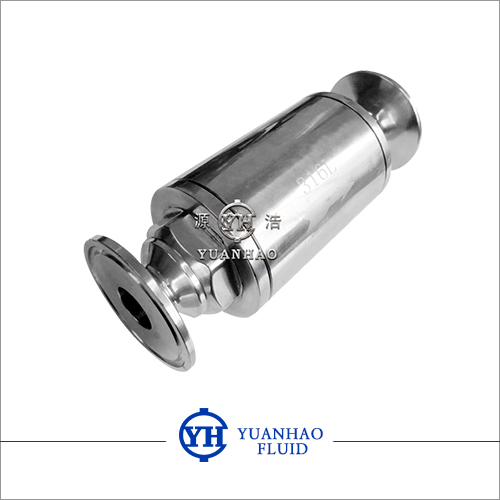
衛(wèi)生級(jí)快裝直通疏水閥 Sanitary clamp trap valves
蒸汽系統(tǒng)中的凝結(jié)水、空氣和二氧化碳?xì)怏w盡快排出,同時(shí)最大限度地自動(dòng)防止蒸汽的泄漏。
工作原理
蒸汽疏水閥,安裝在蒸汽加熱設(shè)備與凝結(jié)水回水集管之間。開(kāi)啟時(shí),桶在底部,閥門(mén)全開(kāi)。凝結(jié)水進(jìn)入疏水閥后,流到桶底,充滿閥體,全部浸沒(méi)桶體,然后,凝結(jié)水通過(guò)全開(kāi)閥門(mén)排至回水集管。蒸汽也從桶體底部進(jìn)入疏水閥,占據(jù)桶體內(nèi)的頂部,產(chǎn)生浮力。桶體慢慢升起,逐漸向閥座方向移動(dòng)杠桿,直到完全關(guān)閉閥門(mén)。空氣和二氧化碳?xì)怏w通過(guò)桶體的排氣小孔,聚集在疏水閥的頂部。從排氣孔排出的蒸汽,都會(huì)因疏水閥的散熱而凝結(jié)。當(dāng)進(jìn)來(lái)的凝結(jié)水開(kāi)始充滿桶體時(shí)桶體開(kāi)始對(duì)杠桿產(chǎn)生一個(gè)拉力。隨著凝結(jié)水位不斷升高,產(chǎn)生的力不斷增加,直到能夠克服壓差,打開(kāi)閥門(mén)。疏水閥閥門(mén)開(kāi)始打開(kāi),作用在閥瓣上的壓差就會(huì)減小。桶體將迅速下降,使閥門(mén)全開(kāi)。積聚在疏水閥頂部的不凝性氣體先排出,然后凝結(jié)水排出。水流從桶體流出時(shí)帶動(dòng)污物一起流出疏水閥。凝結(jié)水排放的同時(shí),蒸汽重新開(kāi)始進(jìn)入疏水閥,新的一個(gè)周期又開(kāi)始了。
Sanitary clamp trap valve steam system condensate, air and carbon dioxide gas emissions as soon as possible, at the same time to maximize the automatic prevention of steam leakage.
Steam traps, installed between steam heating equipment and condensate return headers. Open, the barrel at the bottom, the valve fully open. Condensate into the trap, the flow to the bottom of the bucket, filled with the valve body, all immersed in the barrel, and then, condensate through the fully open valve to the backwater header. Steam also enters the trap from the bottom of the barrel, occupying the top of the barrel and creating buoyancy. Slowly rise the barrel body, and gradually move the lever toward the seat until the valve is completely closed. Air and carbon dioxide gas pass through the barrel vent holes and collect at the top of the trap. The steam exhausted from the vent will condense due to heat dissipation from the trap. When the incoming condensate begins to fill the barrel, the barrel begins to exert a pulling force on the lever. As the condensate level continues to rise, the resulting force increases until it overcomes the pressure differential and opens the valve. Trap valve begins to open, the role of pressure on the valve will be reduced. The barrel will rapidly drop so that the valve is fully open. The non-condensable gas accumulated at the top of the trap is discharged first, and then the condensed water is discharged. When the water flows out of the barrel body, the dirt flows out ofthe trap together. While the condensate is being discharged, steam begins to re-enter the trap and a new cycle begins again